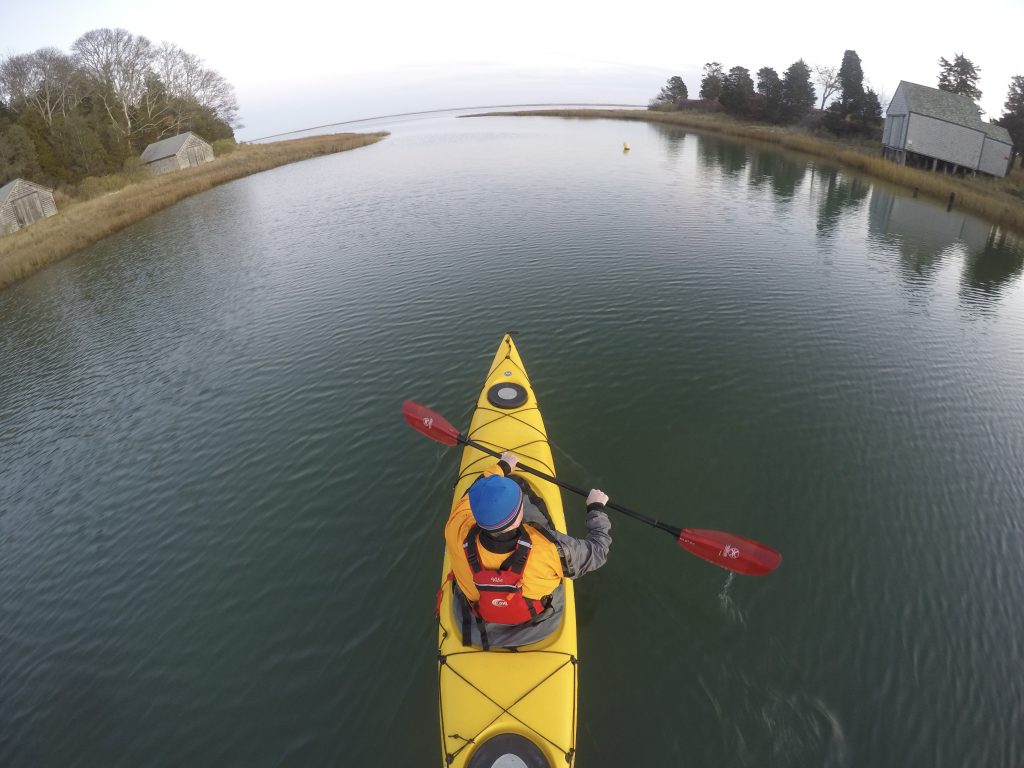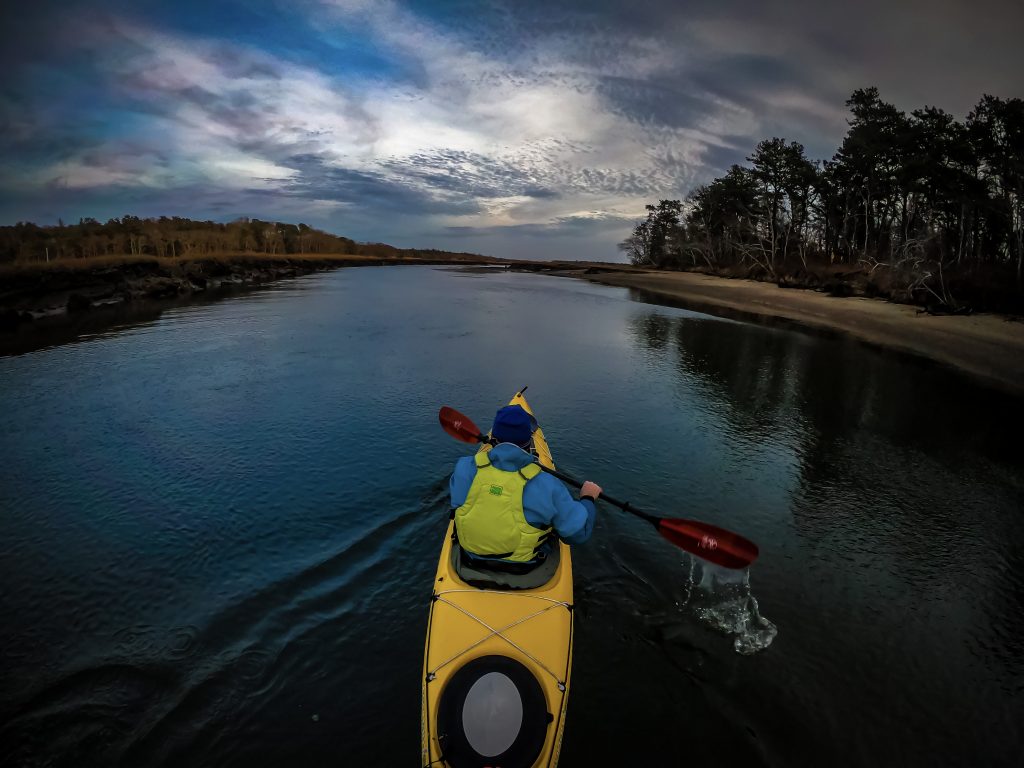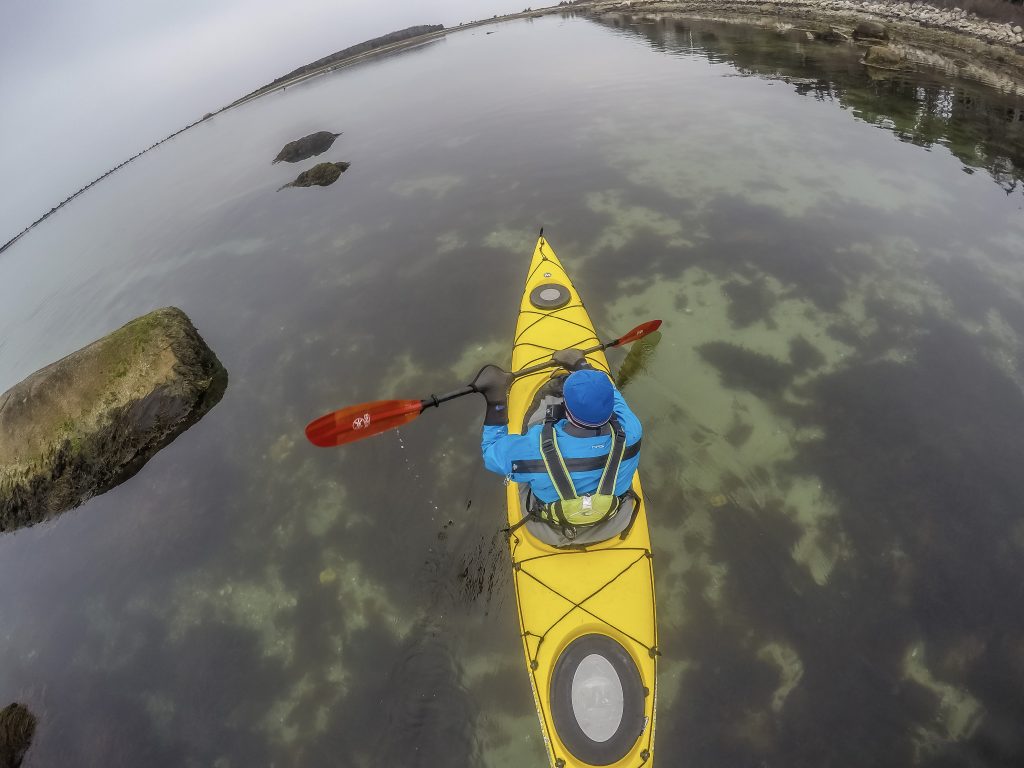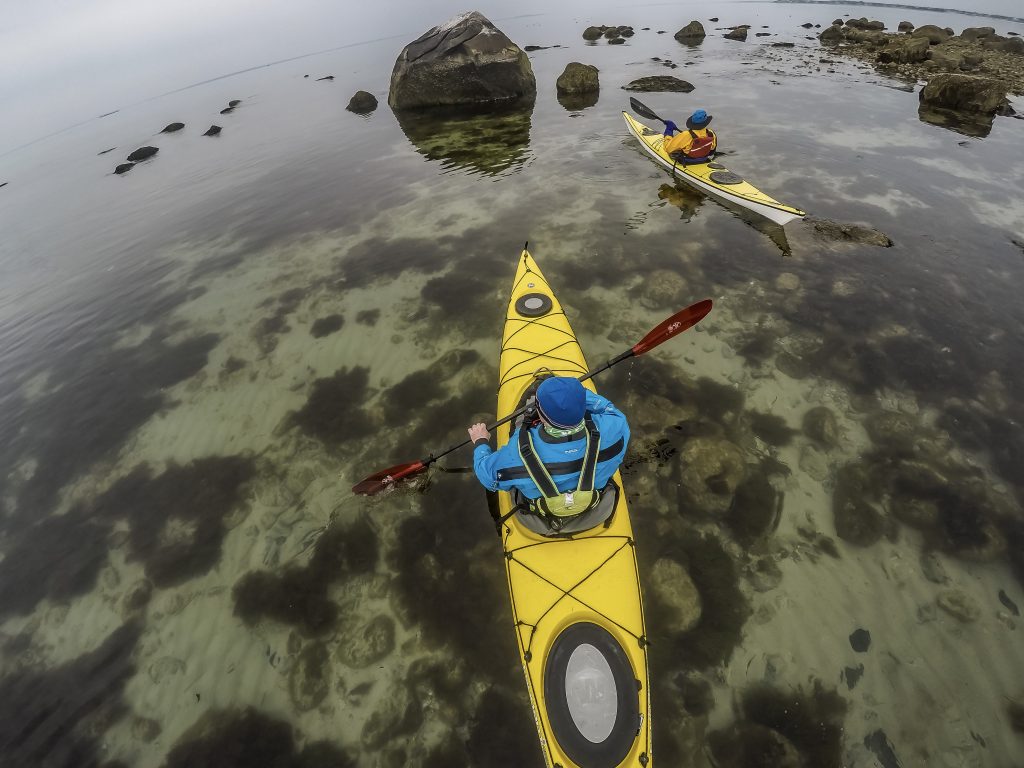The days are getting longer and the temperature is getting warmer—well, the air temperature at least. Ocean, lake, and river water is still cold, which makes spring one of the most dangerous times to paddle. Cold water immersion ranks among the leading causes of injury and death in paddle sports. Before you launch your canoe, kayak, or paddleboard this spring, make sure you’re well-versed in cold-water paddling safety to ensure you stay out of harm’s way and make it back to shore.

The Risks of Cold-Water Paddling
When you set out for a casual spring paddle, you don’t expect to find yourself in a life-threatening situation—but if you’re not prepared for cold water, you very well could. Cold water drains body heat up to four times faster than cold air, putting paddlers at risk of hypothermia. In the case of immersion, cold water can mean a rapid loss of strength, dexterity, clear thinking, and ultimately an increased chance of drowning.
Equally as troubling as hypothermia is cold shock—when the body reflexively gasps for air when immersed in cold water and causes an increase in heart rate and blood pressure. Cold shock poses a variety of risks to cold-water paddlers, from gasping for air while underwater and inhaling a big gulp of cold water to hyperventilation, bolstering the odds of an unpleasant outcome.
It’s easy to think that only super-cold water can threaten hypothermia or trigger cold shock, but it’s not true. According to the National Weather Service (NWS), cold shock has the potential to be just as severe and dangerous in water temperatures ranging between 50 and 60 degrees as it is in 35-degree water. It’s possible for immersion in water as warm as 77 degrees to trigger gasping for breath and rapid breathing. The NWS reports that roughly 20% of those who fall into water below 70 degrees die in the first minute of immersion due to cold water shock. Keep in mind that the average ocean water temperature off the coast of Cape Cod is roughly 50 degrees in May.
While cold-water paddling can be scary, a lot of the risk is mitigated by proper preparation—cold water preys on the unsuspecting and imprudent.

Prepare Yourself for Cold-Water Paddling
Preparation for cold-water paddling begins with being ready for the possibility of immersion in cold water. The chance of surviving immersion hinges on your ability to stay afloat and stay warm until you can self-rescue or help arrives. A few steps you can take to increase your safety include:
- Wear a PFD/life jacket on and around cold water. A PFD is often the difference between someone being a survivor and a statistic. It helps keep you afloat if you can’t save yourself and significantly lowers your chances of inhaling water due to cold shock. Massachusetts law requires personal watercraft users—such as kayakers, canoeists, and stand-up paddle boarders—to wear a lifejacket between September 15 and May 15.
- Dress for the water temperature, not the air temperature. If the water is cold, wear a drysuit—a waterproof piece of paddling gear—with quick-drying, wicking, and insulating layers underneath it. It’s also a good idea to pack spare layers in a dry bag on your boat or board.
- Check the weather and water temperature before you paddle. Learn the conditions you’ll encounter and if the water is too cold or the weather is too unpredictable, consider saving your paddle for another day.
In the end, cold-water paddlers should prepare for the worst (swimming) by taking the appropriate precautions and hope for the best (an incident-free excursion).

What to Do If You’re Immersed in Cold Water
If you do end up immersed in cold water, here are some steps you can take to improve your odds of survival:
- Stay calm. Don’t panic and think clearly about the situation.
- Get out of the water as quickly as possible, whether it’s back in your boat, another vessel, or to shore. If you can’t get completely out of the water, get as much of your body out of the water as possible (for example, float on top of your overturned kayak).
- Assess your options. Can you self-rescue? Can you swim to shore? Are you best served by saving your energy and waiting for help?
- If you can’t get out of the water, assume the Heat Escape Lessening Position, or HELP position, which as its name implies, slows the loss of body heat. To get in the HELP position, draw your knees to your chin, keep your legs together, and bring your arms to your sides to keep your head out of the water.
- If immersed in the water with another person(s), huddle together to conserve body heat.
Because the risks are elevated when paddling in cold water, it’s a good idea to paddle with a partner. If you do happen to swim, there’s someone to help get you back in your boat or on your board, get you to shore, or call for help. I also always tell someone where I’m paddling and what time I plan to be back. That way, if something does go wrong, rescuers know exactly where to look for me.

If Someone Swims in Cold Water
If your paddling partner is immersed in cold water and needs treatment, the Red Cross has developed a series of steps to take after you get them out of the water:
- Call 911 or the local emergency number.
- Move the person someplace warm.
- Monitor their breathing and circulation (give rescue breathing or CPR if needed).
- Remove the person’s wet clothing and dry them.
- Warm the person slowly by wrapping them in blankets or by putting them in dry clothing.
- Supplement with hot water bottles or chemical hand warmers—wrapped in towels or blankets—if available.
- Be careful not to warm the person too quickly, which can create other issues.
- Focus on warming the core first, then the extremities.

Final Thoughts About Cold Water Paddling
Before I hit the water I always ask myself, am I prepared to swim? Consequently, I leave a float plan with someone before hitting the water. Also, I always launch wearing my PFD (it doesn’t do me any good on the deck of my kayak or board), dressed in the appropriate layers, and with a dry bag packed with extra gear—additional layers, some snacks, and a first-aid kit which includes some chemical hand warmers. I also carry my phone, in a waterproof case, attached to my lifejacket, so I can get to it quickly if needed.
Lastly, I keep a dry set of clothes in my car. If someone does swim, I have something dry and warm to change them into and if we have an incident-free paddle, I have something cozy to wear on the way home.
Luke Foley
Luke Foley is passionate about discovering and sharing hidden local treasures and has long been a New England adventure enthusiast. After all, there are only a few places where you can skin for fresh tracks in the morning and have a sunset surf session on the same day.
Related Posts
April 24, 2024
What to Bring When Road Tripping with Your Dog
Prepare for the ultimate road trip with…




